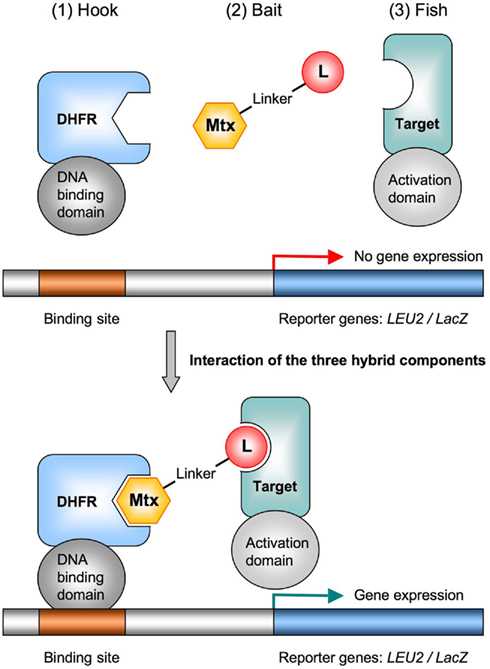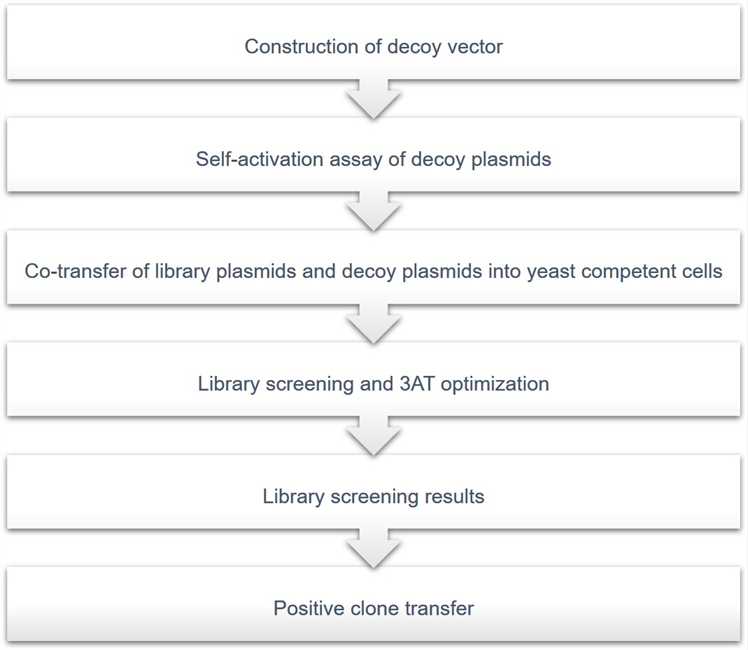Many biological processes are carried out through macromolecular interactions such as protein-protein and nucleic acid-protein interactions. The study of these macromolecular interactions helps to reveal the molecular mechanisms of action in life processes. With the widespread use of the yeast two-hybrid (Y2H) system, the yeast three-hybrid (Y3H) system was developed. And the Y3H system has a broader range of applications than Y2H.
 Figure 1. The yeast three-hybrid system for target identification. (Cottier, S. et al., 2011)
Figure 1. The yeast three-hybrid system for target identification. (Cottier, S. et al., 2011)
The Y3H system introduces a pBridge plasmid capable of inserting two exogenous proteins simultaneously. The RNA-protein interaction leads to the transcription of the reporter gene, and the RNA-protein interaction can be detected by cell growth, clonal color, or specific enzyme activity. Lifeasible has established a stable and efficient Y3H system (including library construction and screening) designed to help customers study more complex macromolecular interactions, which includes the three components interactions. It provides a new tool for studying protein-protein interactions, RNA-protein interactions, and small molecule-protein interactions.
The general experimental flow of Y3H system library screening

Sample requirements
With the Y3H system, we provide our customers with a simple and rapid method to detect protein-protein, RNA-protein, and small molecule-protein interactions in vivo. Since it is performed in vivo, the protein has the potential to maintain its natural conformation. Unlike many in vitro assays, the Y3H system does not require the purification of target proteins and antibodies. In addition, it is a sensitive method for detecting weak and transient interactions. Yeast strains are ideal model organisms in eukaryotic genetics, and we are still improving the technique to reduce the selection of false positive clones.
Broad areas of application
With the addition of sequence databases and genomic information, Lifeasible is actively integrating the Y3H system with large-scale screening technologies. Technical support can be provided for building protein-protein and RNA-protein interaction profiles across the entire genome. Please contact our staff to learn how we can help you with Y3H technology.
Reference